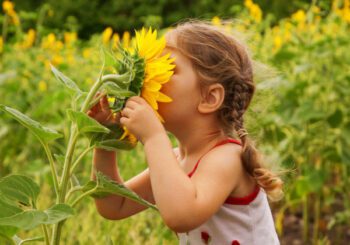By Jane Marsh
Guest Writer for Wake Up World
Reliance on technology has created a division between children and the outdoors, but it’s easy to link them again. The digitization of the world could bring more opportunities for kids to connect with nature alongside more organic ways of inspiring them to explore.
No matter the degree of interest, these methods will help children feel more drawn to nature to make them more involved in caring for and protecting the planet as they grow older.
[pro_ad_display_adzone id=”110028″]
Encourage Imagination Through Independence
The limitlessness of a kid’s imagination is the most powerful tool for increasing their connection to nature. However, the benefits of creativity cannot flourish fully unless given freedom. Whether at a park or in a backyard, it’s important to let children have agency when choosing their activities — with proper safety precautions.
This freedom will let them uncover the facets of nature they find most compelling, whether it’s the smell of flowers or how insects interact with trees. It also allows for greater immersion because interruptions from a hovering parent could disrupt their discoveries, especially when using all of their senses.
Let them touch and interact with everything, even if it involves getting dirty. Climbing, crawling and jumping will engage their motor skills, providing a more profound sense of involvement with their surroundings. Investigating leaf patterns and creating toys out of found materials are excellent ways for children to expand their minds from the fixed mindset of what constitutes fun or a toy.
This is especially true if they tend to gravitate toward one place or activity — there’s no need to encourage them to investigate everything. If they find something to attach to, let them experience that with enthusiasm.
Allowing kids to guide themselves outside will develop different behaviors that transfer indoors. More uninterrupted playtime with fewer screens and distractions creates increased focus and better attention spans, promoting a more creative mind that loves exploring new ideas.
Balance Detoxing and Integration
The most significant benefit of connecting with nature is showing children how amazing it feels to detox from technology, even briefly. The peace nature provides, forcing them to step back and slow down, will help their physical health by reducing tension and stress.
Physical benefits from detaching from technology will offer a real temptation to continue stepping outside. This doesn’t have to be a solo venture either — accentuating the importance of connecting with friends and family and play with games are productive distractions from the lure of a phone.
Sometimes nature is as mysterious as it is confusing. Though technology appears to be a deterrent from connecting to nature, the beauty of electronics can be a remarkable tool to simplify complex concepts.
This tangibility is vital for creating a long-lasting connection between kids and nature because it decreases resistance to interacting if they know how to access information. Apps and other technology could help children identify birds, plants or constellations. Activities like geocaching can satisfy a kid’s urge to interact with technology but be required to interact with the environment.
Look Close to Home
This could mean a backyard or a local park, but there are far more opportunities close to home to experience the magic of nature. Plus, it may be beneficial to try and find unexpected nooks where natural wonder is peeking through to accentuate the all-over connection to nature.
For urbanites, finding corners where small shrubs grow or weeds break through sidewalk cracks are moments to show the power of nature close to home. Nature-connection activities can extend outside walks and hikes into exploring community gardens or botanic areas. Try exploring places like a local library which may have seed-growing classes or stargazing activities that provide them more tools to interact, but it’s still nearby.
Never underestimate the power of natural accessibility. This makes nature more tangible, solidifying the genuine connection. Despite nature documentaries highlighting the awe-inspiring valleys and summits that remind people of what’s out there, to connect children more immediately, they must foster a sense of magic without having to travel to remote locations.
It’s also important to show the reality of nature, too — not just the lovely parts. It’s possible to educate kids about the effects of climate change by pointing out wildlife that didn’t exist in the town last year or how the community grows different flowers because the soil composition has changed. Though the climate crisis sounds like it would deter children from developing deeper natural connections, it will only instill a sense of urgency and more profound understanding to continue their involvement and participation.
Reconnecting Children With Nature
Kids will embrace the wonders of nature if given the opportunity. Though defaulting to tablets or television helps gives parents a much-needed reprieve, there are other ways to obtain this relaxation by nurturing children to discover nature. Let them wander and experience it with their senses and the appreciation will follow innately. Eventually, kids will walk outside without prompting and long to treasure and protect nature.
About the author:
 Jane is the founder and editor-in-chief of Environment.co where she shares practical tips on how to live a greener life.
Jane is the founder and editor-in-chief of Environment.co where she shares practical tips on how to live a greener life.
[pro_ad_display_adzone id=”110027″]



